#Bassariscus astutus
Text
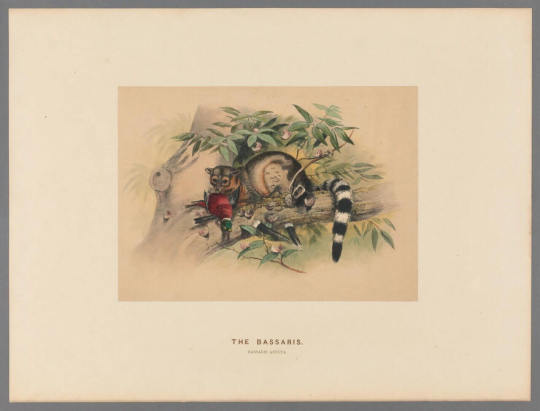
The Bassaris (Bassaris astuta) | Joseph Wolf | Zoological sketches v.1 (1861) | Biodiversity Heritage Library | Flickr | Public domain
1 note
·
View note
Text
Le bassaris rusé ou ring-tailed cat, charmant mammifère d'Amérique du nord
Nouvel article publié sur https://www.2tout2rien.fr/le-bassaris-ruse-ou-ring-tailed-cat-charmant-mammifere-damerique-du-nord/
Le bassaris rusé ou ring-tailed cat, charmant mammifère d'Amérique du nord
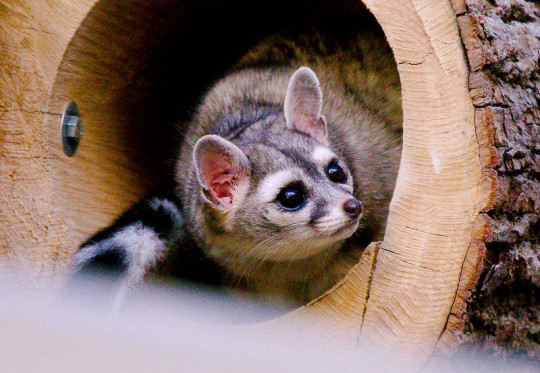
#Arizona#bassaris#Bassariscus astutus#chat#espece#fourrure#mexique#odeur#queue#raton laveur#ringtail#USA#vidéo#animaux#imxok
1 note
·
View note
Photo

A ringtail (Bassariscus astutus) relaxes on a rock in Phoenix, Arizona
by Robert Body
#ringtail#procyonids#ringtail cat#bassarischus astutus#bassariscus#procyonidae#carnivora#mammalia#chordata#wildlife: arizona#wildlife: usa
109 notes
·
View notes
Text
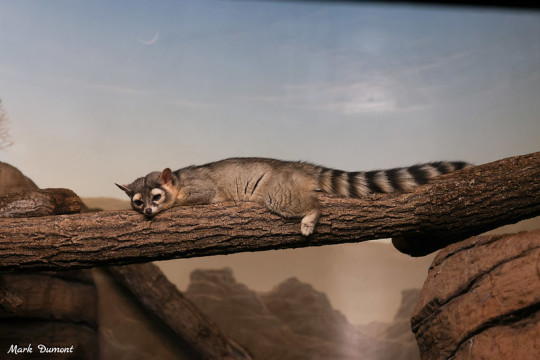
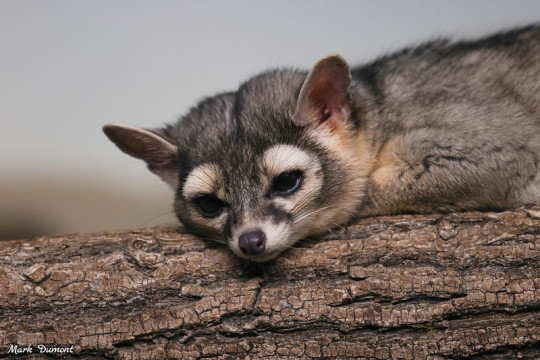
Ringtail (Bassariscus astutus)
Photos by Mark Dumont
1K notes
·
View notes
Photo

The Ringtail (Bassariscus astutus)
AKA “Ringtail Cat”
If there’s one thing you should know about the Ringtail cat, it’s that they are not a cat! In fact, they are a member of the raccoon family.
Their similar features to a feline earn them a few other names including miner’s cat and civet cat. Despite these misconceptions, the Ringtail is named for its tail, which is long, ringed and bushy.
Native to the southwest US and Mexico, these mysterious mammals are nocturnal and have many adaptations to help them survive at night. Their large, round eyes help them see in complete darkness and their big ears allow them to hear the slightest sounds. They can also maneuver along cliffs and between small openings and cracks, while descending headfirst by rotating their hind feet 180 degrees. With the help of their tail, they’re able to balance and climb.
When they’re not active and out hunting, they are most likely sleeping in their den which can include hollow trees, rock crevices and abandoned burrows from other animals.
They may also be hiding from predators like coyotes, bobcats, and great horned owls. As an omnivore, they eat a variety of foods, though they tend to prefer meat. Insects, mice, lizards, snakes, scorpions, fruit and plants make up a typical diet. As a result, they play an important role in the ecosystem by maintaining balance in these prey populations and aiding in seed dispersal.
via: Zion National Park - Utah, USA
495 notes
·
View notes
Text

[ CLOSED ]
Bassariscus Astutus Adoptable
My very first adoptable, i hope you like it!
INFORMATION AND TERMS OF SERVICE
❣️PAYMENT VIA PAYPAL PLEASE. USD. I will ask you for your email to send the payment request
❣️Must pay within 24 hrs of auction end
❣️Once you pay, you will receive the image in format both png and jpg without the watermark
❣️ Once the adopt is yours you're free to do with them whatever you want, just credit me for the original design please
#furry#adopt auction#furry oc#adopts open#open adopts#adoptable#anthro#furry art#kemono#myart#furry adopt#creature design#cheap adoptables
11 notes
·
View notes
Photo
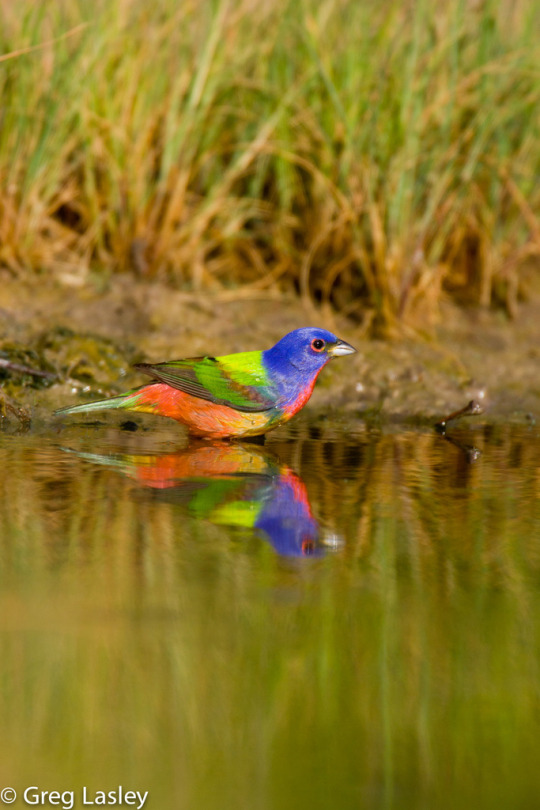
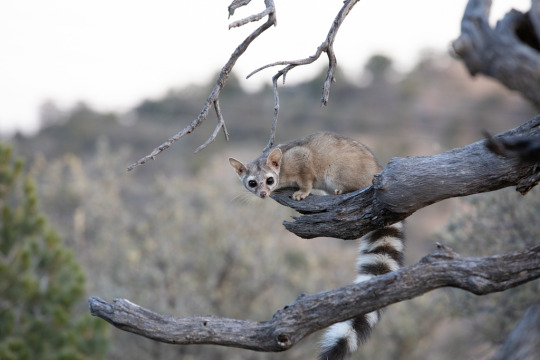
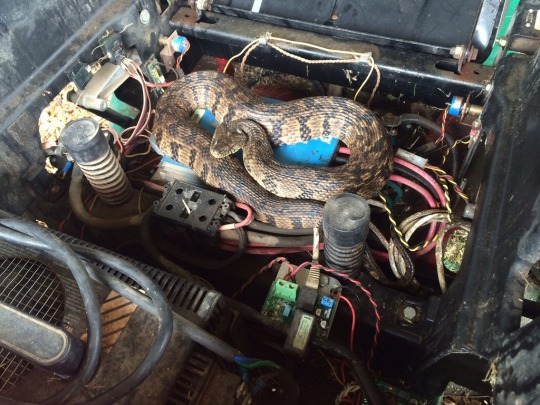


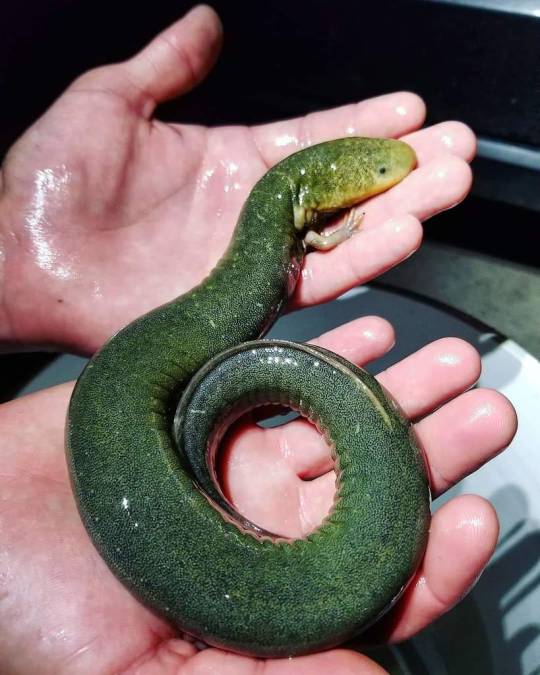
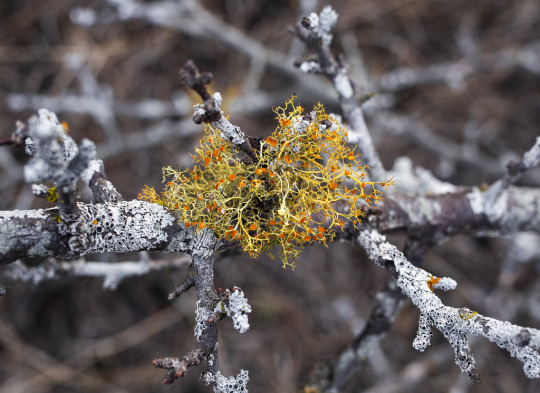
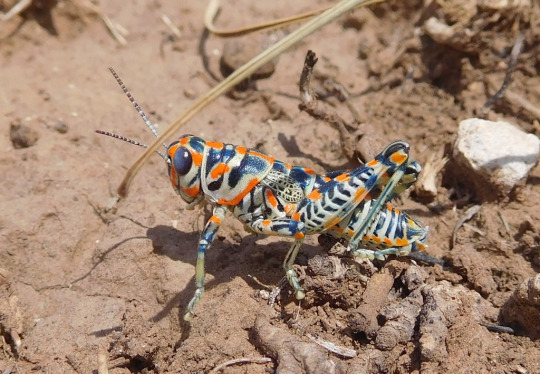
iNat Geo: Texas Wildlife on iNaturalist
Painted Bunting (Passerina ciris) © Greg Lasley
[ID 1: A many-coloured bunting stands in shallow water. It has a blue head, green wings and back, and a red, orange, and yellow belly. It is well-reflected on the still water. /End ID.]
Ringtail (Bassariscus astutus) © Lee Hoy
[ID 2: A ringtail crouches on the branch of a dead tree. The mammal has a small, pointy face with large dark eyes and cat-like ears. It has a long bushy tail with black and white rings. /End ID.]
Diamondback Watersnake (Nerodia rhombifer) © Marissa Little
[ID 3: A brown snake with dark markings along it’s sides. It is curled up inside a lawnmower amid the wires and mechanisms. /End ID.]
Swan Flower (Aristolochia erecta) © Mikael Behrens
[ID 4: A pipe-like flower stands upright. The lower part of the flower is smooth and green and leads up to a tongue-shaped top that is pale with dark red splotches and speckles. /End ID.]
Longtail Tadpole Shrimp (Triops longicaudatus) © Robby Deans
[ID 5: An aquatic pinkish-translucent shrimp-like crustacean steps over moss. It has a shield-like carapace and a thick, ridged “tail”. /End ID.]
Rio Grande Siren (Siren intermedia ssp. texana) © Michael Powell
[ID 6: A dark green amphibian with small front limbs and no hind limbs is supported in both of a person’s hands. /End ID.]
Slender Orange-Bush (Teloschistes exilis) © mgram55
[ID 7: A leafless, lichen-covered branch is host to a bushy yellow lichen. At the end of the branches of the lichen are bright orange discs. /End ID.]
Rainbow Grasshopper (Dactylotum bicolor) © ellen hildebrandt
[ID 8: A grasshopper is boldly marked with bright orange and dark blue on a whitish base colour. /End ID.]
iNaturalist is a citizen science project where anyone can upload observations of wildlife, get community identification, or contribute to identification themselves. Your observations contribute research grade records to science! Join to be a part of the global project.
Want to see wildlife from another US state? Request in comments here!
#wildlife#nature#ecology#zoology#texas#killy killy#iNat Geo#mammalia#inaturalist#aves#reptilia#amphibia#crustacea#insecta#plantae#fungi#wildlife photography#nature photography#biology#crustaceans#herps#herpblr#plants#birds#birblr#birdblr#bugs#bugblr#insects#grasshoppers
21 notes
·
View notes
Text
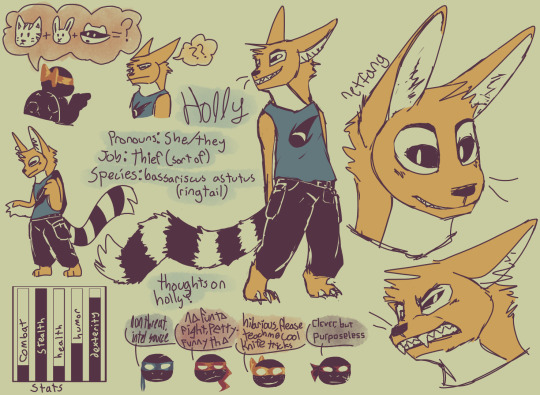
I have a tmnt oc lol. shes a Ringtail aka Bassariscus Astutus and her name is Holly. these r just some doodles while im procrastinating on the tmnt comic Little short story under the cut
-----
The rooftop was quiet.
The only sounds he could hear were the breathing of his brothers, and the way the tails of his mask twisted in the wind- a sound that would be completely unnoticeable if you weren't trained as shinobi.
More than quiet, the rooftop was completely silent.
That meant she was here.
"Oh hey guys," she said from above them casually, as if she wasn't holding a ceremonial dagger prized by the Foot Clan and doing middle school knife tricks with it. It dangled precariously from her hands as she held it out over the edge of the water tower.
"Holly," Leo began, his tone the exact same as the one he uses when one of his brothers started poking a body with a stick, "Please return the dagger."
"The Foot are being so annoying about it, dude. They're way more pissy than usual and we didn't even DO anything!" Michelangelo adds, sighing at the end for dramatic effect.
The other two remained silent, but they relaxed their stances. Donatello grabbed some unidentifable thing from his bag and started to fiddle with it, while Raphael just crossed his arms and sighed. Holly was never a good fight, and only Leo actually took her seriously at this point.
"Can you just give it back so we can all go home?"
The ringtail just flashed her fangs in a grin. The blade embedded itself into the ground a few feet away from them an instant later. By the time the turtles glanced back upwards, her silhouette was gone.
"Are you still coming to movie night?" Mikey called after her, cupping his hands around his mouth to broadcast his voice.
Raphael pulled Mikey back into formation by the bow tied at the back of his mask, the brothers already turning to return the dagger. "Stop inviting the known thief to movie night, Mikey."
"I wanna know her thoughts on Ocean's Eleven! She's the expert!"
#my art#tmnt oc#in my personal tmnt thing each character only has max two colors#not including the black and white colors#so it was kind of hard to design a ringtail cuz their marking are wibbly but i think shes okay#her eyebrows are the top part of the face markings lol#i coudl talk about her forever. she has a whole thing going on#that one big headshot is actually so bad but its the first doodle of her i did so of course it isnt gonna be great -_- still tho
5 notes
·
View notes
Text
7 Surprising Things That are Native to the Americas
1. Bamboo
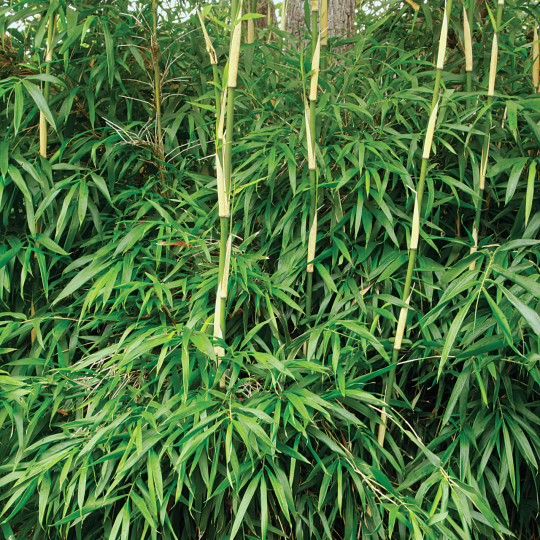
Arundinaria is a genus of bamboo native to North America. Though in America it’s known as cane. They’ve been used by the Native Americans for centuries in basket weaving and other important crafts. Giant Cane or Rivercane (Arundinaria gigantea), in particular, is considered a precious resource that was used in the making of baskets, flutes, arrows and other weapons, bean poles, and jewelry.
2. Pineapple
Pineapple was first domesticated in South America. I would’ve thought Pineapple grew in some tropical tree like a coconut. But, they actually just grow straight out of the ground on a stalk.

3. Peanuts
Like the pineapple, peanuts are thought to have first originated in South America. Peanut butter—or at least a ground paste—was even recorded by indigenous Mexican and South Americans. Huh. Just think. The Mesoamericans could’ve grounded up peanuts and then mashed up some prickly-pear cactus fruit. Spread them both on a tortilla and boom! Pre-Columbian peanut butter and jelly sandwich.
4. Cassava
Because of its association with African dishes (like the West African fufu), its easy to think this plant sprang from the African continent. But, it actually originated in South America. Side note: I actually got the Cassava (Manihot esculenta) and Yucca plant confused at one point. Yuca (a.k.a Cassava) is not the same as Yucca. They are from two unrelated plant groups, with Yuccas being a member of the asparagus family.

5. The Ringtail
The ringtail (Bassariscus astutus) is a small adorable animal that looks like it stepped out of a tropical Asian rainforest. But, if you live near the deserts in the American Southwest you might not have to look any further than your backyard. The ringtail is a common North American native and a relative of raccoons and coatimundis. Unlike both of its relatives, however, next to no one ever talks about the ringtail in real life or even in nature documentaries. If it hadn’t been for the internet, I’m not sure if or when I would’ve even heard of one. I was absolutely shocked when I found out that you could find these animals in Texas.
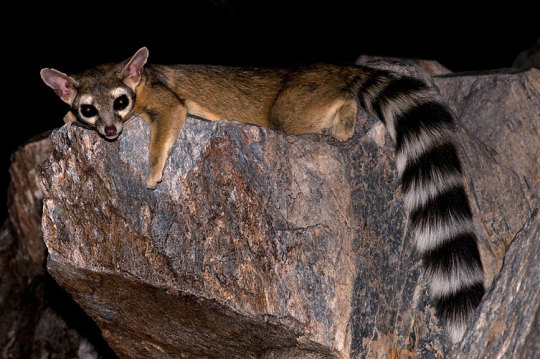
6. The Coatimundi
I know this one shouldn’t count because everyone knows the Coatimundi is from the Americas. But most of us North Americans only think about them as “exotic” animals from in the tropics of Mexico and the South American jungles alongside other popular wildlife icons like the sloth and the capybara. Imagine my surprise knowing a random North American can find this animal in their backyard as far north as Arizona. They even share a space with their cousin, the Ringtail.
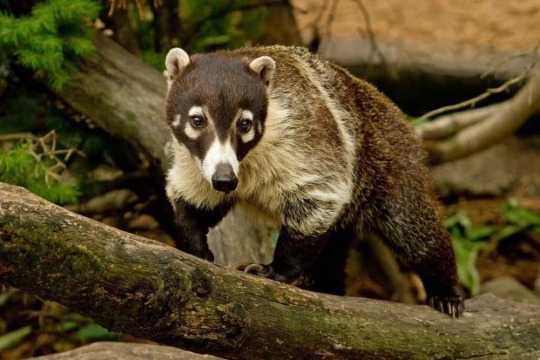
7. The Pronghorn Antelope
One look at this animal and you'd think you were staring at a photo taken at a South African Safari. In reality, you're staring at the native of the North American Savannah, the Pronghorn Antelope (Antilocapra americana). Interestingly, some of their closest relatives are the Okapi and the Giraffe. But they are the American equivalent of the gazelle being able to clock speeds of up to 55 miles per hour!

0 notes
Photo

RINGTAIL CAT
Bassariscus astutus
©Laura Quick
I only know one person lucky enough to see a ringtail in the wild. But they are native to Southern California. The ringtail is a mammal of the raccoon family, native to arid regions of North America. Even though it is not a cat, it is also known as the ring-tailed cat, miner's cat or bassarisk, and is also sometimes called a "civet cat"
Trophic level: Omnivorous
Length body: body measures 30–42 cm (12–17 in)
Length tail: averages 31–44 cm (12–17 in) from its base
Mass: 0.7 to 1.5 kg (1.5 to 3.3 lb)
Family: Procyonidae
Other posts you might like:
Baby Opossum
Baby Striped Skunks
Raccoon

#ringtail cat#bassariscus astutus#©laura quick#desert dwellers#north america#bassarisk#civet cat#ringtail#miners cat#ring-tailed cat#los angeles zoo and botanical gardens#los angeles zoo#lazoo#glaza#omnivore#carnivora#mammalia#fox-like#Latin name means ‘clever little fox’#procyonidae#nocturnal
263 notes
·
View notes
Text
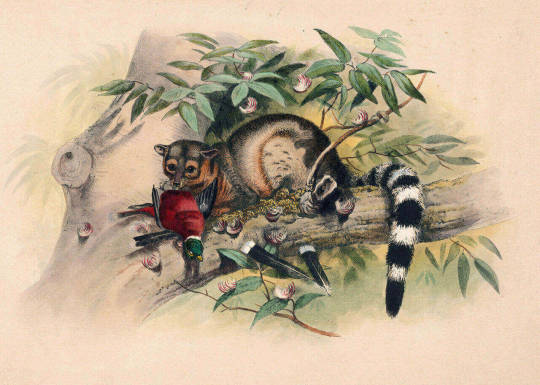
Bassariscus astutus | Joseph Wolf (1820-1899)
11 notes
·
View notes
Photo


NOBODY ever talks about north americas most unappreciated mammal, Bassariscus astutus, also known as a Ringtail or Ring-tailed cat. Its not cat though, its actually in the raccoon family! They can be found in Texas, California, Arizona, New Mexico and Colorado.
3K notes
·
View notes
Photo

Ring-tailed cat (Bassariscus astutus)
The ringtail is a mammal of the raccoon family, native to arid regions of North America. Its body alone measures 30–42 cm and its tail averages 31–44 cm from its base.Ringtails are primarily nocturnal, with large eyes and upright ears that make it easier for them to navigate and forage in the dark. It uses its long tail for balance, as it is an adept climber. The rings on its tail can also act as a distraction for predators. The white rings act as a target, so when the tail rather than the body is caught, the ringtail has a greater chance of escaping.It is commonly found in rocky desert habitats, where it nests in the hollows of trees or abandoned wooden structures. As an omnivore the ringtail enjoys a variety of foods in its diet, the majority of which is made up of animal matter.
photo credits: Robertbody
#Ring-tailed cat#Bassariscus astutus#zoology#biology#biodiversity#science#wildlife#nature#animals#cool critters
644 notes
·
View notes
Text


Ringtail (Bassariscus astutus)
Photos © David Welling / naturepl.com
138 notes
·
View notes
Photo

Ringtail (Bassariscus astutus),Phoenix, Arizona, USA
Also called “ringtail cats”, these animals are in the raccoon family Procyonidae. They are found in the South-central and SW United States, and most of Mexico. Like other animals in this family, ringtails are omnivorous, eating a wide variety of fruits and small animals.
photograph by Robert Body | Wikipedia CC
64 notes
·
View notes
Photo
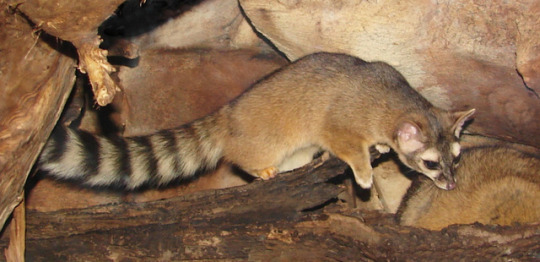
Image: Lazette Gifford
The Cutest US Mammal You’ve Probably Never Seen
Ringtail - BASSARISCUS ASTUTUS
BY LISA FELDKAMP
MARCH 15, 2017
Ringtails are nocturnal, solitary, and sparsely populated throughout their range — factors that can make them a challenge to see in the wild. Watch for them at night in trees and shrubs near riparian areas (close to rivers and streams). Around February through May, when ringtails are breeding, you could catch sight of them during daylight hours.


Images: Tatiana Gettelman - flickr
3 notes
·
View notes